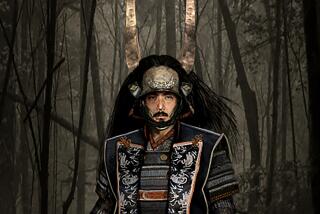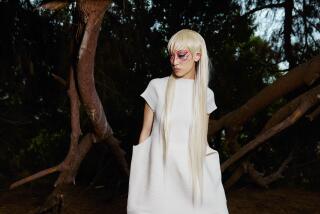Kimono Communion
- Share via
For proof that the opening world of turn-of-the-century Japan was influencing Europe, look at Impressionist Claude Monet’s most exquisite image, “Water Lilies.” A decade or so later, fashion, like many other art forms, began to follow Monet’s lead, exploring the West’s fascination with the East.
In 1873, a silk merchant from Yokohama, Japan, went to the International Exposition in Vienna to scout out export business. The result, a quilted silk kimono for Western women, is now on display in the Los Angeles County Museum of Art exhibit, “Japonism in Western Dress: The Influence of Japan on Western Dress,” which continues through June 15.
The Eastern influence flourished as European and American women came out of their corsets. The kimono presented a modest silhouette still suitable for society. The kimono also offered a new design concept--a canvas for a painting rather than the carefully repeated patterns for which European fabric houses were famous.
In the last 100 years, high-fashion houses--Chanel, Dior, the House of Worth and Fortuny--incorporated such influences: an evening dress adorned with a star-burst of carnations (symbol of the Japanese imperial family); an afternoon tea gown suitable for entertaining female friends; a ‘20s wedding dress designed from a kimono pattern. In the 1960s, Rudi Gernreich combined mod, fab colors with traditional concepts for his famous Kabuki dress. Thirty years later, Japanese designer Issey Miyake returned the compliment.






